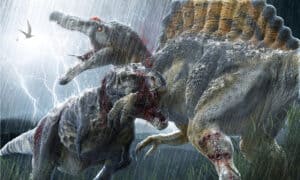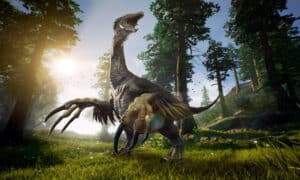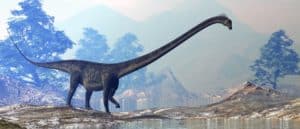Geodes are spherical rocks with crystal-lined hollow cavities. They are beautiful and unique, forming over thousands of years. But they are even more astounding when they turn out to be dinosaur eggs. This phenomenon is not uncommon. Voids inside the eggs can be filled by calcite and quartz crystals, resulting in geode-like structures. Discover what was inside these huge crystal-filled dinosaur eggs and other recent discoveries from this Chinese dinosaur hotspot.
Where Did Scientists Find the Fossilized Dinosaur Eggs?
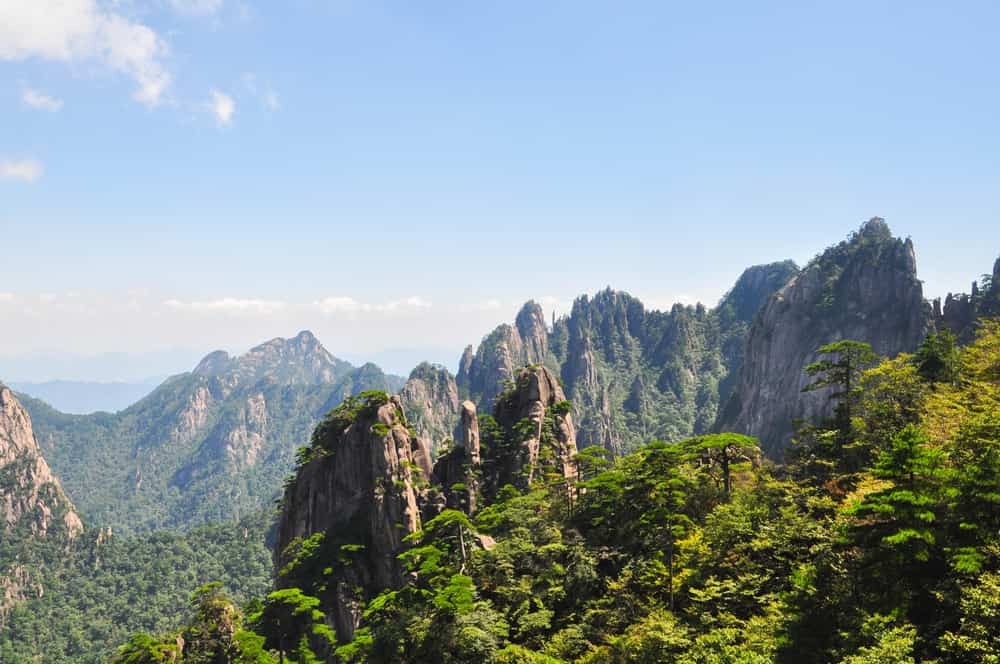
The Qianshan Basin is a late cretaceous to early paleocene sedimentary basin. The area is known for its discoveries of Paleocene vertebrates.
©FloFid/Shutterstock.com
Chinese paleontologists dug up three dinosaur eggs about the size of a cannonball in the Qianshan Basin of East China’s Anhui Province. The site where the eggs were was along a highway in the cretaceous strata of the basin. The Qianshan Basin is a late cretaceous to early Paleocene sedimentary basin. The area is known for its discoveries of Paleocene vertebrate mammals, reptiles, and birds. But was rare for finding cretaceous reptiles, until recently with these new dinosaur eggs.
The scientists found the fossilized eggs in the basin’s soil and counted three in total. However, they lost one of the eggs in the process of recovery. They did not say how this happened. Out of the other two preserved eggs, one was complete and the other incomplete. The incomplete egg contained clusters of calcite crystals.
What Dinosaur Do They Belong To?
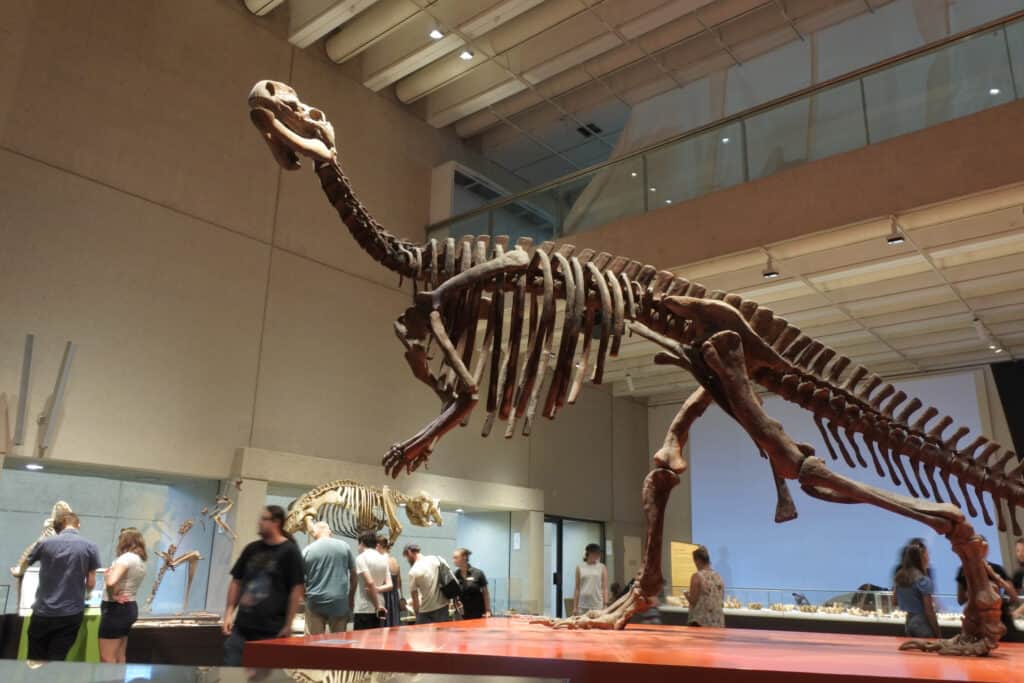
The eggs belong to a dinosaur from the Cretaceous period, most likely an ornithopod. Ornithopods were bipedal running herbivores.
©ChameleonsEye/Shutterstock.com
The recently discovered dinosaur eggs are classified as a new oospecies. Oospecies, oogenera, and oofamilies are the taxonomic names for dinosaurs known only from their eggs. They refer to this new species as Shixingoolithus qianshanensis. Their shells distinguish them from other dinosaur species. They possess a larger size and density of radial microstructures on the eggshell’s inner surface.
The eggs belong to a dinosaur from the Cretaceous period, most likely an ornithopod. Ornithopods were bipedal running herbivores with duck-like bills. They were one of the longest-surviving and most widespread dinosaurs from the late Jurassic to the late Cretaceous periods. They were exceptionally fast runners and could grow up to 30 feet long, although most were between five and 20 feet. This dinosaur family died during the mass extinction event that wiped out all non-avian dinosaurs. The Chicxulub asteroid was six miles wide when it smashed into the Yucatan Peninsula 66 million years ago.
Perfectly Preserved Dinosaur Found in China
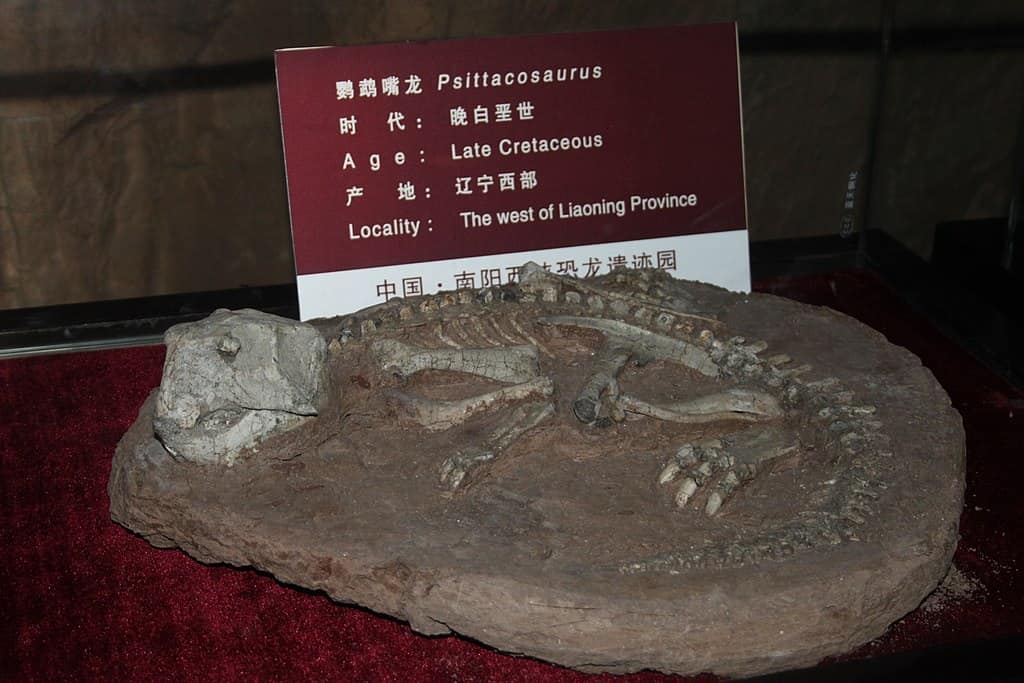
Scientists found two Cretaceous embryo fragments that turned out to be one of the most complete dinosaur embryos ever recorded.
©Gary Todd, CC0, via Wikimedia Commons – License
In East China’s Jiangxi Province, scientists found two Cretaceous embryo fragments. These are one of the most complete dinosaur embryos ever. Nicknamed “Baby Yang,” the fossil also belongs to the duck-billed family known as Hadrosaurids, which includes ornithopods.
While many dinosaur egg fossils and embryos exist around the world, none are quite this preserved. This embryo discovery is one of the rarest finds on Earth.
Why Is China a Hotspot for Dinosaur Fossils?
During the time of extinction, volcanic eruptions went off around East China, perfectly preserving the unique flora and fauna over 60 million years ago. At most dig sites around the world, most finds are just bones. But the provinces of Eastern China contained layers of ash and mud, sealing off oxygen and preventing decomposition. Today, this area of the world is a treasure trove of ancient plants, vertebrates, and invertebrates. Some fossils are so well-preserved scientists can identify the stomach contents of dinosaurs.
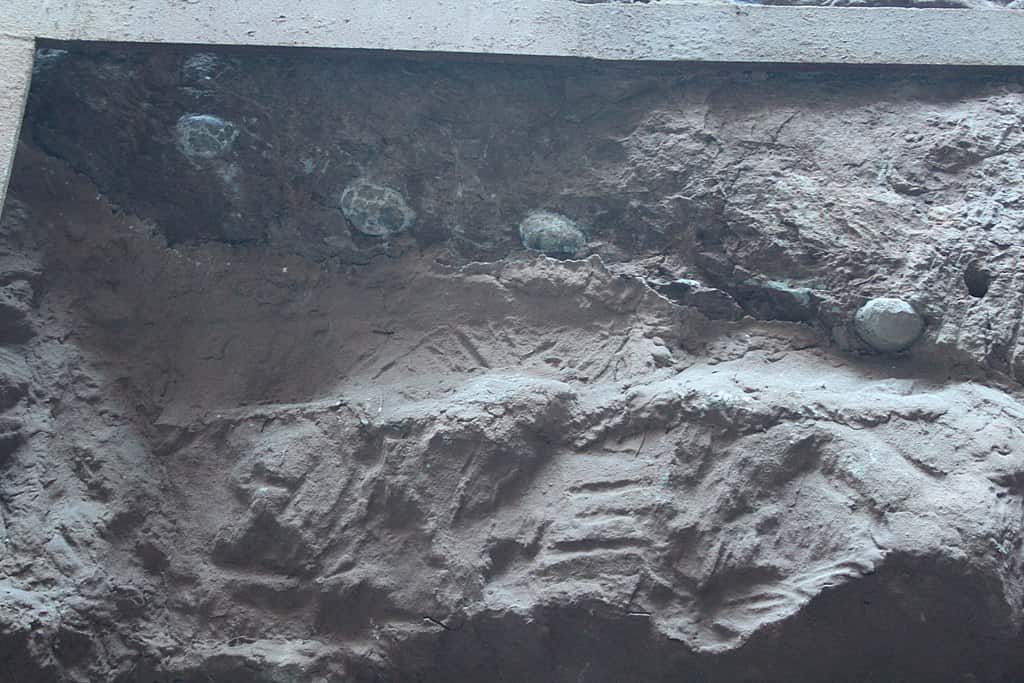
During the time of extinction, volcanic eruptions went off around East China, preserving the unique flora and fauna over 60 million years ago.
©Gary Todd, CC0, via Wikimedia Commons – License
What Can We Learn from These New Discoveries?
The discoveries in China, such as the perfectly preserved embryo, provide exceptional information about life millions of years ago. Scientists can learn about dinosaur behavior, evolution, reproductive development, and how species interacted with one another. Dinosaur fossils have a physical connection to climates and landscapes from when the earth was relatively new. As scientists discover how these animals adapted to a changing earth, it can help us with our modern issues of a changing climate.
Are Fossil Finds Something New?
Until the 1980s, discoveries of fossilized eggs and bones of young dinosaurs were extremely rare. Now, however, dinosaur eggs have been discovered on several continents, and fossils of hatchlings, juveniles, and adults have been found for most major groups.
Paleontology became established as a discipline of science in the 18th century and rapidly developed in the 19th century, especially with the popularity of Egyptology. So humans have been digging for fossils for a few hundred years, but not with very sophisticated equipment until the 20th century.
It is quite likely that the occasional dinosaur bone stuck up out of the ground long before them. What did people think they were? Why, dragons, of course! Or other mythical creatures. In fact, that may be how the myths got started. Geomythology is the study of the possible associations between real geological phenomena and myths and legends. There is actually extensive documentation of historic “dragon bones” in the form of numerous historical texts, illustrations, and records. Our modern learned interpretations of fossils were not necessarily shared with peoples living thousands or hundreds of years ago.
The photo featured at the top of this post is © Gary Todd / CC0 1.0, Flickr – License / Original
Thank you for reading! Have some feedback for us? Contact the AZ Animals editorial team.



